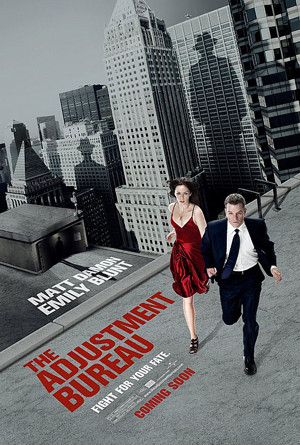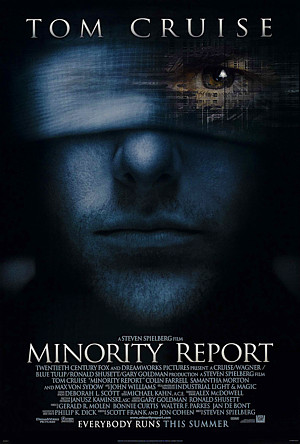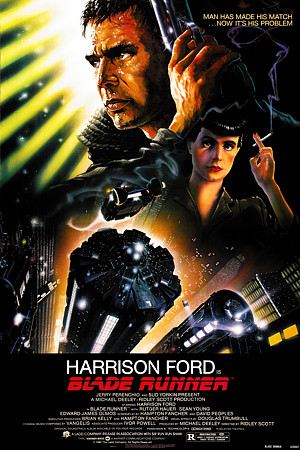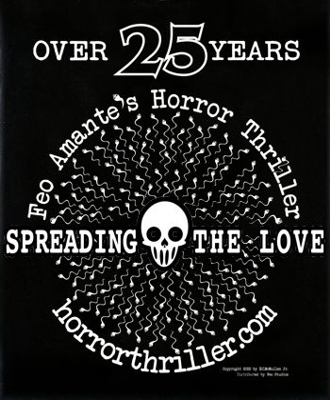 |
 |
Review by Mark Worthen |
|

THE ADJUSTMENT BUREAU- 2011USA Release: Nov. 4, 2011 Electric Shepherd Productions, Gambit Pictures, Media Rights Capital, Universal Pictures Rated: USA: PG-13 |
|||
"It doesn't matter how you feel. What matters is what's in black and white."
- "Richardson," The Adjustment Bureau
THE ADJUSTMENT BUREAU is something rare in cinema these days: a good story artfully told. All too often, you see cool ideas with one or more forms of poor execution: a not-well-thought-out plot, poor production values, lousy acting. This movie is artistic and interesting, and I can't stop watching it, because I haven't seen that combination since THE SIXTH SENSE. As a result, it has something that Nickelodeon so tersely calls "rewatchability." You see something new every time it's on the screen.
Okay, I admit it.
I have a deep-seated fascination with Philip K. Dick stories. The man's works explored reality, fate, altered reality, perception, and authority, all of which captivate me as concepts to be taken apart and looked at like old electronic gadgets. As a young man growing up during the 60's and 70's, during the years of the "revolution," I learned to question authority and deal with the "alternate realities" of drug use, science fiction, cyberspace (yes, we had computers), and role-playing games.
A sufferer of paranoia and other forms of personality disorder, Dick told stories meant to make us wonder if what we thought we knew was actually the truth and whether the choices we made were really our own. His 1954 story, "Adjustment Team," deals with some of these exact questions. "Why," is a question oft repeated during the film, as the main character seeks to understand the reason he can't be with the woman he loves, and no one on the Bureau can give him a satisfactory answer, but only says it's "off-plan."
The movie begins during the campaign of U.S. Senate hopeful David Norris, played by Matt Damon (DOGMA, THE TALENTED MR. RIPLEY, THE BROTHERS GRIMM). Norris is the youngest congressman ever elected to the House of Representatives, and during his bid for the Senate seat, some pictures come to light, so to speak, of Norris mooning his college buddies at a reunion. As a consequence, he loses the race, but, as he prepares his concession speech in the Waldorf men's room, he meets a woman, Elise Sellas (Emily Blunt: THE WOLFMAN), who is hiding there from hotel security after crashing a wedding.
He immediately falls in love, kissing her and uttering the words "Holy shit" upon coming up for air. Members of the Adjustment Bureau masquerading as hotel security chase Elise away before he learns her name, and Norris gives his concession speech, ignoring his notes and speaking from the heart about authenticity and all the work preparation it takes for a candidate to be attractive to the public.
This speech brings him back from the brink and makes him the primary choice for the next election.
Fast forward a little bit. Having taken a new job, he crosses the park and gets on a bus, promptly spotting his dream girl, who finally gives him her first name and phone number. But he wasn't supposed to be on that bus – the Bureau had been intending to make an "adjustment," but it didn't come through. He arrives at work and walks into a room where men in drab suits guarded by others in riot gear have frozen his new coworkers and are using some sort of electronic gear to alter the reasoning powers of his best friend, new boss and campaign manager, Charlie Traynor (Michael Kelly: UNBREAKABLE, DAWN OF THE DEAD [2004]).
Norris runs. They catch him, using a series of doors that lead not to other rooms, but to other destinations only they can access, as long as they wear their assigned hats. They appear on all sides of him, coming through several different office doors. They take him to a strange warehouse and tell him he must never reveal what he has seen or he will be "reset," or, as Norris himself puts it, "lobotomized." He was never supposed to see the members of the Bureau performing one of their "adjustments," and he was never supposed to run into Elise after the men's room encounter.
The movie then becomes a perfect blend of action-thriller and love story. Director George Nolfi elicits consummate performances from the primary actors, Damon, Blunt, and Anthony Mackie (THE MANCHURIAN CANDIDATE [2004], THE HURT LOCKER), who plays Harry Mitchell, a sympathetic member of the adjustment team who gives help, hints, and advice to Norris during the film. Also, of course, there is Thompson, alias "The Hammer," a member of the Bureau with more "latitude," played to creepy perfection by veteran horror-thriller actor Terrence Stamp (SPIRITS OF THE DEAD, TEOREMA, HU-MAN, BLACK-OUT, MYSTERY ON MONSTER ISLAND, ALIEN NATION, RED PLANET, THE HAUNTED MANSION, ELEKTRA, WANTED).
Now this entire plot depends on selling that old "love at first sight" idea. It's a very old proposition, first found in some very old stories – the Biblical story of Jacob and Rebekah, many of Grimm's fairy tales, (both original and reworked Disney versions), not to mention many, many modern and older movies.
But the at-first-sight scene itself takes some real work on the part of all concerned. It depends on the chemistry between the lead actors, their talent, the direction, the dialogue, even such seemingly meaningless but vastly important choices as blocking, lighting, and makeup. This entire movie – all of it – depends upon selling that moment.
Cary Grant and Eva Marie Saint did it in NORTH BY NORTHWEST, and (say what you will about the rest of it) John Cusack and Kate Beckinsale did it in Serendipity. Even Robin Wright-Penn and Cary Elwes did a fair job of it (although it wasn't just one scene) in The Princess Bride. I bought what they had for sale in each one of these movies. In THE ADJUSTMENT BUREAU, Damon and Blunt play this moment to perfection. It may be one of the most well acted and well timed scenes in the film, and Damon gives one of his best performances here – and this is saying something from the Good Will Hunting kid.
But this is not to set aside production values. Lighting, editing, cinematography, symbolism, all have their part to play in the film. Nolfi did an excellent job telling this story. Each act could almost be a tale in itself, and each scene is carefully crafted not only for beauty of frame, but for recurring themes and angles, like Damon, when alone, is almost always shot against something symmetrical, like doorways, buildings, tall windows.
Is he boxed in, perhaps? And when you see this movie, be sure to watch the reactions of the actors shown during voiceovers.
Watch the shots of the listener while the actor speaking is filmed from the back. Watch the dark-light-pattern of shots of New York perform the same function as chapter breaks in a novel. Watch how the color blue always leads to Elise and gray always leads to the team. Nolfi never inserts himself into the story, as some "name" directors do, but through a few atypical shots of New York landmarks, he accomplishes the dual purpose of indicating the passage of time and making the tale very intensely New Yorkian.
The screenplay, also written by Nolfi, is very tight, having been written and rewritten before the Writers Guild strike in 2007 and 2008 and revised several times after. He had a lot of time to perfect this one in his head and on paper before committing it to film. Entire scenes go by with just one or two lines, or trusting to the actors to advance the story through their actions and expressions.
When narrative is necessary, it's not just two talking heads, unless the audience needs to be forced into the moment, such as a speech by Bureau Member Richardson, (John Slattery) the leader of the team, for Norris not to reveal what he knows or "We'll erase your brain." Otherwise, we see shots of other moments, such as those people being discussed by the voiceover actors, giving us visual information while the lines give us auditory clues. No maid-and-butler dialogue here.
Finally, and above all, watch the performances. I get goosebumps during the climactic scene of this movie.
Go see THE ADJUSTMENT BUREAU. I don't often rate a film with five shriek girls. But I don't often see a film more than three times at movie theater prices. See it, enjoy it, and study it. It's a movie, a piece of art, a good story, and a filmmaking lesson all in one.





This review copyright 2011 E.C.McMullen Jr.

|
| GET SOME CLOTHES ON | |
| YOU MIGHT ALSO ENJOY (Sub-Section: Philip K. Dick) |
||
 |
 |
 |
| MINORITY REPORT MOVIE REVIEW |
BLADE RUNNER MOVIE REVIEW |
NEXT MOVIE REVIEW |
FEO AMANTE'S HORROR THRILLERCreated by:E.C.McMullen Jr. FOLLOW ME @ |
| Amazon |
| ECMJr |
| Feo Blog |
| IMDb |
| Stage32 |
| Twitter X |
| YouTube |
| Zazzle Shop |

